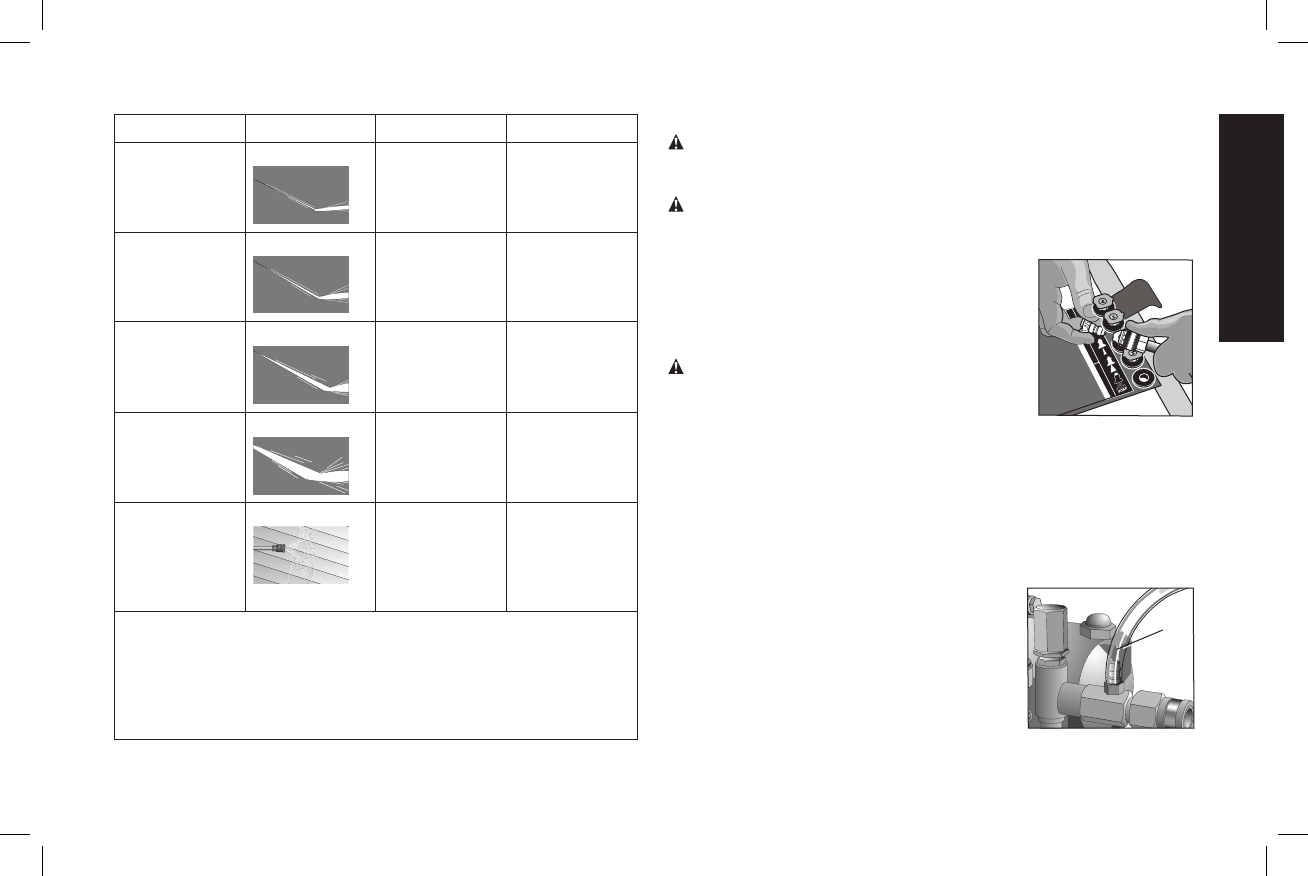
11
CHANGING NOZZLES ON SPRAY WAND
DANGER: Risk of fluid injection. Do not direct discharge stream
toward persons, unprotected skin, eyes or any pets or animals.
Serious injury will occur.
WARNING: Flying objects could cause risk of serious injury. DO
NOT attempt to change nozzles while pressure washer is running.
Turn engine off before changing nozzles.
1. Pull quick-connect coupler back and insert
nozzle.
2. Release quick-connect coupler and
twist nozzle to make sure it is secure in
coupler.
WARNING: Flying object could cause risk
of serious injury. Ensure nozzle is completely
inserted in quick-connect socket and quick-
connect snap ring is fully engaged (forward)
before squeezing gun trigger.
Applying chemicals or cleaning solvents is a low-pressure operation.
NOTE: Use only soaps and chemicals designed for pressure washer
use. Do not use bleach.
TO APPLY CHEMICALS AND SOLVENTS
1. Press chemical hose (S) onto barbed fitting
S
located near high pressure hose connection
of pump as shown.
2. Place the other end of chemical hose with
filter on it into the container holding chemi-
cal/cleaning solution.
NOTE: For every 7 gallons (26.5 liters) of
water pumped 1 gallon (3.8 liters) of chemi-
cal/cleaning solution will be used.
Nozzle Color Spray Pattern Uses Surfaces*
Red
0˚ powerful
pinpoint for
very intense
cleaning
metal or
concrete;
DO NOT use
on wood
Yellow
15˚
intense
cleaning of
small areas
metal, concrete
or wood
Green
25
˚
intense
cleaning of
larger areas
metal, concrete
or wood
White
40
˚
covers wide
areas of
cleaning
metal, concrete,
wood or vinyl
Black
low pressure
applies cleaning
solutions
metal, concrete,
wood or vinyl
* CAUTION: The high-pressure spray from your pressure washer
is capable of causing damage to surfaces such as wood, glass,
automobile paint, auto striping and trim, delicate objects such
as flowers and shrubs. Before spraying, check the item to
be cleaned to assure yourself that it is strong enough to resist
damage from the force of spray.


















